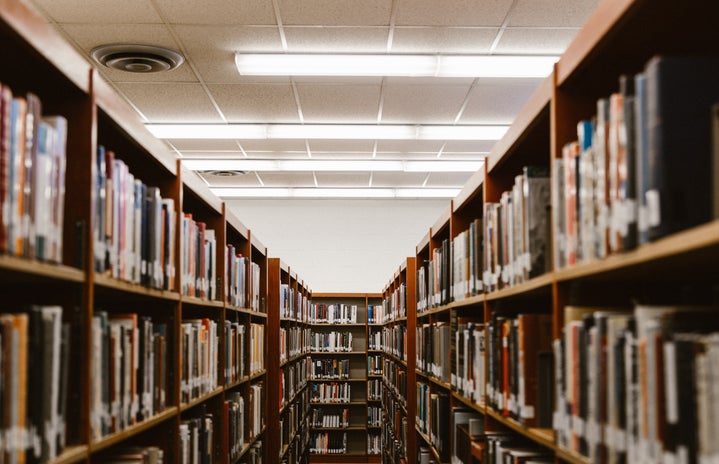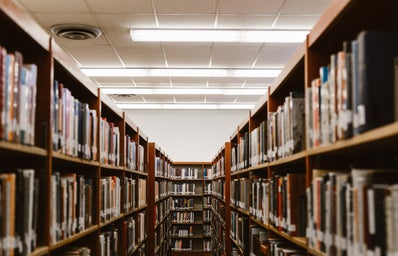We all know that time in the semester when students tend to sleep basically anywhere. Yup that’s right, it’s finals, or it was finals week. For the past two weeks, dead week had students sleeping anywhere and everywhere. The library was finally open 24 hours and we definitely took full advantage. However, dead week and finals week are not the only reasons why you’ll find students sleeping in random spots. Here are some of the common places you’ll see students sleeping.
Classroom
The classroom is probably the most common place you’ll see a student sleeping; in fact, it’s probably the number one spot. I have been guilty as well of falling asleep in class, I just can’t help it. Perhaps the professors is boring or you just didn’t get enough sleep the night before, but I guarantee that you’ve at least dozed off once in class. And yes, the professor has probably seen you too, especially if your class is small, you are bound to be found out.
Library- 1st floor couches
I have definitely seen multiple students take advantage of those couches and fallen asleep there, especially when midterms and finals come around. It’s no surprise when you go in search for a place to sleep, that all the couches are taken. It’s such a common place to sleep that half the time there are no spots left. The couches are really soft and comfy, so I would recommend this spot as a place to sleep. Word of advice, if you don’t want people taking pictures of you, you might want to cover your face with your sweater.
Library-2nd floor ACE couches
Just like the first floor, the couches in ACE are used for nap times as well. Although not used as often as the couches on the first floor, you will find at least one person having their sleeping beauty time. When finals come around, the search and competition for places to sleep becomes a life or death battle and the ACE couches are definitely one of the first spots to go. Quickly grab that spot before someone else does!
Plaza Hallway/ Behind Elkins couches
Although not technically couches, it is a long bench that is comfortable and can be easily used to sleep in. I’ve walked by several peoplewho are taking a quick nap on those seats before classes. Another reason why students might fall asleep in those areas, probably has to due with the warmth from the sun hitting the windows. I’ve taken a few naps there as well; however, since the plaza hallway does get busy, there are a lot of poeple who will be walking past you as you sleep. So you might want to cover your face if you do not want to be seen.
Sandbar couches
The sandbar couches are another popular spot to sleep. With several couches in the small living area, it is high in demands for sleep. The sandbar does get a bit busy, so be aware that you might not have the deepest sleep, unless you are naturally a deep sleeper.
Any Hard Surface
Any hard surface that a student can put their head on, can be a place for sleeping. It can easily be the computer desk in the library, the tables in the ace, or any place you are studying.
Bedroom
Surprised? Well some students actually like to sleep in their beds. Sleeping in one’s own bed might be the most common places you’ll find a student.
Conclusion
You need SLEEP! In fact, I wrote a research paper on the results of sleep deprivation and the effects of cognitive abilities. University students tend to have such a variet of sleeping patterns, and at times it depends on what is going on during that time. Due to the variety of sleeping schedules, it has indicated consequences in difficulties sleeping as well as daytime functioning. These students suffer from cognitive difficulties as well in areas such as poor problem solving and attention. The more the individual lacks in sleep, the more it can lead to “deficits in attention, concentration, memory, and critical thinking” (Brown, Buboltz Jr, & Soper, 2002). The issue that college students face is that they are unaware that the longer they prolong sleep, the more difficulties they have in cognition and learning. The prefrontal lobes are the most affected since cognitive task are there (Durmer & Dinges, 2005; 1996). Although sleep deprivation in college students tends to be more self-inflicted, some studies show that the cause of delay sleep can be programmed in our brain prior to puberty. Sleep deprivation has an effect on alertness and cognitive performance. It is suggested that this is causing a reduction in the “brain activity and function, primarily in the thalamus, prefrontal cortex, and higher-order cognitive processes” (Thomas, et al., 2000). With prolonged periods of sleep, stronger effects on cognitive ability are seen. Sleep deprivation impacts cognitive ability and causes microsleep to occur. Microsleep occurs frequently when an individual does not have an efficient amount of sleep. It is a temporary episode of sleep that can last for several seconds. When an individual “loses awareness and gains awareness after a brief lapse in consciousness” is when microsleep mostly happens (Poudel, et al, 2012). Microsleep can trigger various events such as driving recklessly or dozing off in class. There are two hormones that play a major role in microsleep; one is dopamine, which causes the sleepy feeling, and adenosine which reduces feeling sleepy by promoting wakefulness (Poudel, Innes, Bones, Watts, & Jones, 2012). Sleep deprivation is the cause of several ongoing issues such as microsleep; however, it can be easily treated. So get some rest you definitely need it. Sleep is so necessary that we are willing to risk embarrassment in order to take a nap. If you do not want to be caught sleeping, take your sweater and cover your face, no one will know; or just get a good night’s sleep the night before. If you are tired, go ahead and sleep somewhere,everyone does it.
References:
Brown, F. C PhD, Buboltz Jr, W. C, PhD, & Soper, B, PhD (2002) Relationship of Sleep Hygiene Awareness, Sleep Hygiene Practices, and Sleep Quality in University Students, Behavioral Medicine, 28:1, 33-38, DOI: 10.1080/08964280209596396
Thomas, M., Sing, H., Belenky, G., Holcomb, H., Mayberg, H., Dannals, R., … & Redmond, D. (2000). “Neural basis of alertness and cognitive performance impairments during sleepiness. I. Effects of 24 h of sleep deprivation on waking human regional brain activity”. Journal of Sleep Research (94): 35–52. doi:10.1046/j.1365-2869.2000.00225.x.PMID 11123521.
Poudel, G. R., Innes, C. R., Bones, P. J., Watts, R., & Jones, R. D. (2012). Losing the struggle to stay awake: Divergent thalamic and cortical activity during microsleeps. Human Brain Mapping: 00:000-000
Durmer, J.S., Dinges, D.F., (2005), Neurocognitive Consequences of Sleep Deprivation. Seminars in neurology, 25, 117-129.

